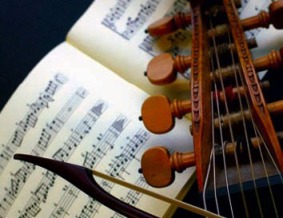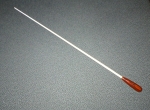The thing about working on a revision is I never know what’s going to pop up that needs my attention. Several years ago, I spent considerable time creating concert programs for the concerts Evan Quinn conducts in the first three novels in the series. I thought that task was finished. A writer is never finished!
 In the first chapter, Evan and another musician converse while they jog through Buenos Aires at night. The musician asks about the American Arts Council banning music and what banned pieces Evan had programmed so far for his guest conducting gigs. All of a sudden, I realized that Evan mentions an upcoming gig with the Toronto Symphony and I hadn’t created a program for it. What would he have programmed?
In the first chapter, Evan and another musician converse while they jog through Buenos Aires at night. The musician asks about the American Arts Council banning music and what banned pieces Evan had programmed so far for his guest conducting gigs. All of a sudden, I realized that Evan mentions an upcoming gig with the Toronto Symphony and I hadn’t created a program for it. What would he have programmed?
Back to Concert Programming 101. I returned to a blog post I’d written in February 2009 entitled Concert Programs to refresh my memory. I decided to follow the standard format, i.e. short overture style piece to open the concert followed by a concerto or concerto-style piece, intermission and then a big piece like a symphony on the second half. I began with the symphony, one that I knew he was already working on for another concert: Jean Sibelius’ Symphony No. 2. The duration of the symphony is about 46:14. Good timing for the second half. So, I have 45 minutes to fill for the first half. I needed something that the Arts Council would have definitely banned and the first composer that came to mind was Arnold Schoenberg. The first piece of Schoenberg’s that popped up was his Five Pieces for Orchestra. I don’t have a recording of this work so I’d have to look up the duration.
Conductors generally use David Daniels’ reference Orchestral Music: A Handbook to look up the durations of specific works. I don’t own a copy, and although I know people with access to a copy and they could probably look it up for me, I decided to see what I could find on the internet. To my surprised relief, it took only one search to come up with a duration. Actually, two durations. One conductor’s recording was 6:14 and another conductor’s was ten minutes. Interesting. At any rate, I knew the duration would probably not be more than ten minutes.
I now had my opening work and my symphony. What to program for the second piece? Something the Arts Council would have banned? Or something Evan would already know? I decided it needed to be something he already knew since he hadn’t known either the Sibelius or the Schoenberg. Then I thought of Ralph Vaughn Williams. I think some of his music would have been banned, like with Samuel Barber, but there would be other pieces that the AC would have loved. Like his The Lark Ascending which could showcase the orchestra’s leader or concertmaster. This could endear Evan to the Toronto Symphony, plus Vaughn Williams is a British composer and Canada belongs to the Commonwealth, so that might also prove to create good feelings in Toronto. The duration is only 14:15. That means the first half is only about 24 minutes. But the Vaughn Williams makes such a nice contrast to the Schoenberg, I decided to keep it.
Evan’s Toronto program with intermission is now 90 minutes long. This is an acceptable duration for an orchestral concert which can be 60 to 120 minutes long. The Toronto gig is the week following Buenos Aires, so Evan would have already worked with the Toronto Symphony Orchestra’s staff and music director on the program and received their input and approvals. The only thing left for me to decide is which piece Evan will talk about with his jogging partner. Another easy choice: the Schoenberg.
This is an acceptable duration for an orchestral concert which can be 60 to 120 minutes long. The Toronto gig is the week following Buenos Aires, so Evan would have already worked with the Toronto Symphony Orchestra’s staff and music director on the program and received their input and approvals. The only thing left for me to decide is which piece Evan will talk about with his jogging partner. Another easy choice: the Schoenberg.
I create fictional concert programs, but I must make them authentic. Doing this work gives me insight and renewed respect for conductors of professional orchestras. They also must work with marketing departments and work within a budget. I don’t have to worry about either….



